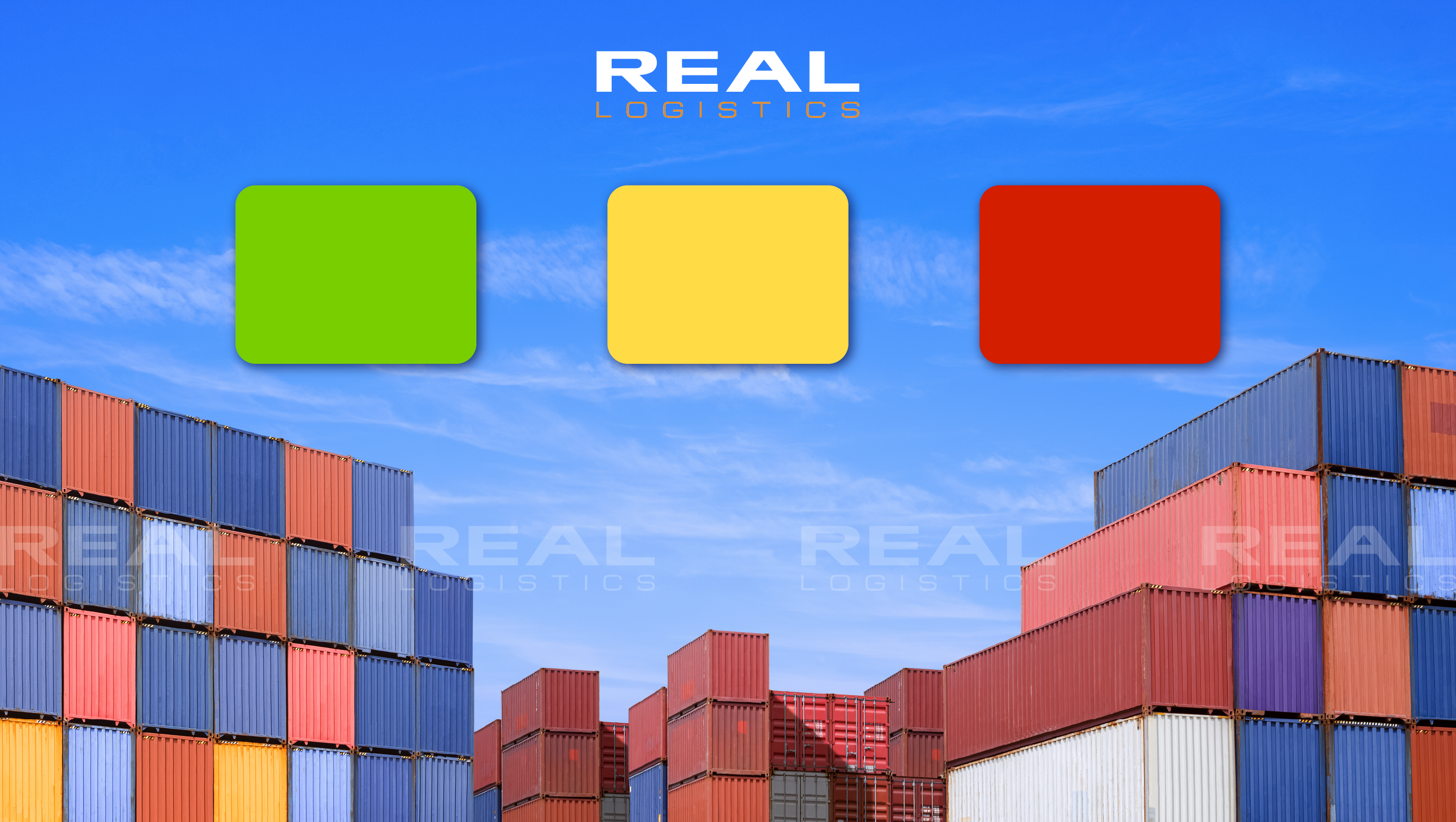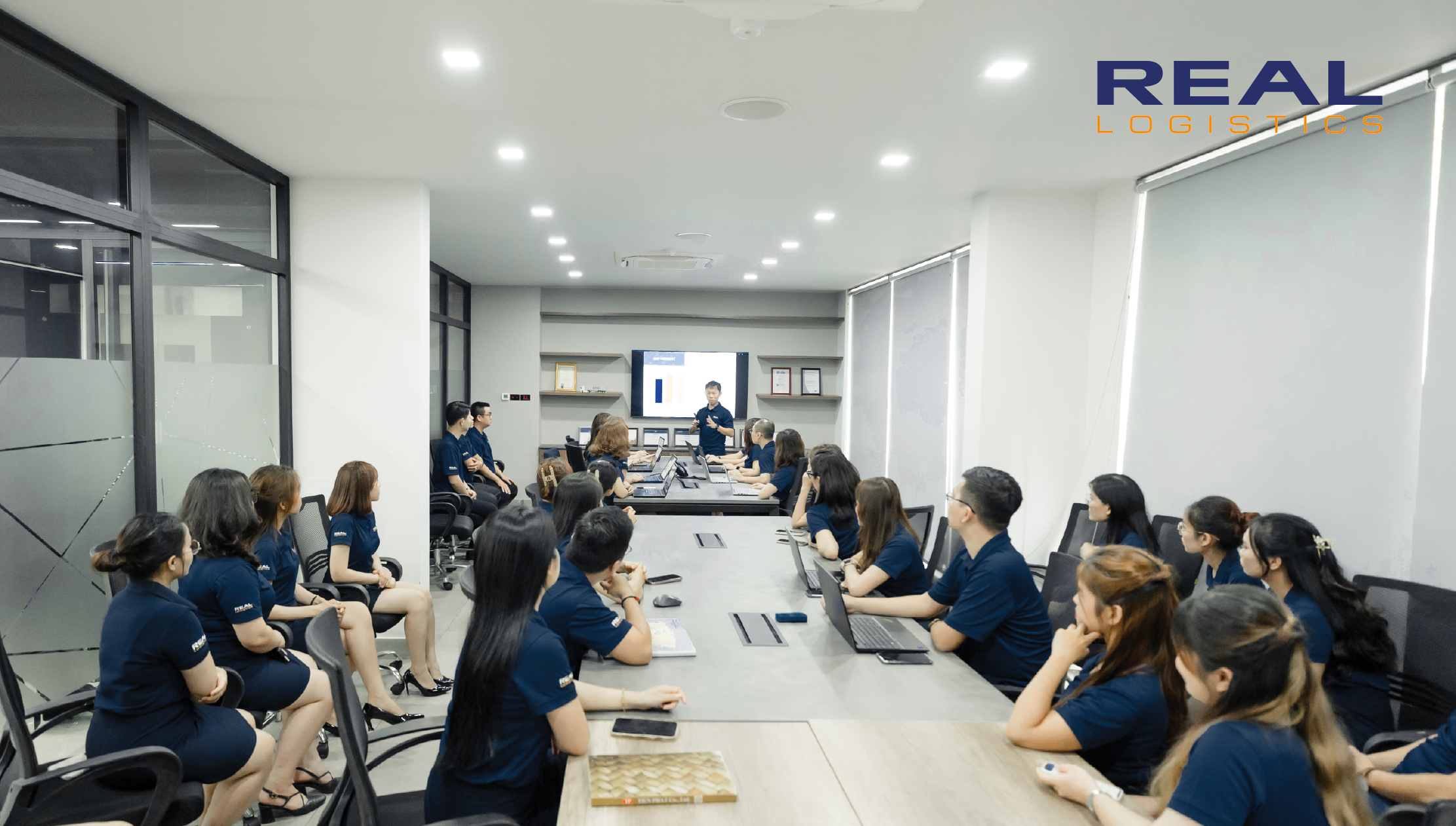Explore Customs Selectivity: From Regulations to Optimized Strategies for Businesses

In the context of ever-expanding international trade, swift and efficient customs clearance is a crucial factor determining the success of any supply chain. One of the most important concepts every import-export business needs to grasp is "Customs Selectivity" (also known as Customs Lane System).
Understanding the selectivity mechanism not only helps businesses proactively plan their logistics but also optimizes costs and time. In this article, Real Logistics will delve deep into customs selectivity, its determining factors, relevant legal regulations, and strategies to help your business achieve the coveted Green Lane.
1. What is Customs Selectivity and the Significance of Each Lane?
Customs selectivity (or Selectivity of customs declaration form) is an effective risk management mechanism applied by Customs Authorities to supervise, inspect, and manage import and export goods. The primary objective is to ensure strict control, combat smuggling and trade fraud, while simultaneously facilitating trade for businesses that comply with the law.
According to Clause 3, Article 19 of Circular 38/2015/TT-BTC (amended by Clause 8, Article 1 of Circular 39/2018/TT-BTC), electronic customs declarations are classified into three main lanes, often symbolized by colors, much like traffic lights:
1.1. Green Lane (Lane 1 - Acceptance of Declared Information):
- Characteristics: Exemption from detailed document inspection and physical inspection of goods.
- Significance: This is the most desired lane for all businesses. Goods are cleared extremely quickly, minimizing storage time and logistics costs. It is typically reserved for businesses with an excellent history of legal compliance.
1.2. Yellow Lane (Lane 2 - Inspection of Related Documents):
- Characteristics: Detailed inspection of customs documentation (paper documents) or documents submitted via the National Single Window Portal, but exemption from physical inspection of goods.
- Significance: Businesses must submit all required documents for customs review. The risk level is lower than the Red Lane, but verification of information through documentation is still required. Once documents are inspected and no violations are found, the consignment will be cleared.
1.3. Red Lane (Lane 3 - Physical Inspection of Goods):
- Characteristics: Detailed inspection of both documents and physical inspection of goods.
- Significance: Applied to consignments or businesses with a high level of risk. This is the strictest level of control, requiring businesses to be thoroughly prepared and accept longer customs clearance times.
In some cases, customs officers may propose re-routing the lane if the information on the system is deemed inaccurate or if suspicions arise.

2. Factors Determining Customs Declaration Selectivity
The classification of customs declarations is carried out automatically by the electronic customs data processing system, based on risk classification criteria stipulated by the Minister of Finance. Here are the 5 main factors that the system and customs authorities rely on for selectivity:
2.1. Enterprise's Legal Compliance Level:
- Violation frequency: A history of violations of customs or tax regulations will be recorded. Businesses with frequent or serious violations (e.g., commercial fraud, tax evasion) will have a higher risk of being routed to the Yellow or Red Lane for stricter inspection.
- Cooperative attitude: A proactive and cooperative attitude from the business, including regularly updating full information to customs authorities, is also a positive factor.
2.2. Management and Tax Policies:
- Special or sensitive goods: Items on restricted lists, those affecting public health (food, medicine), national security (weapons, explosives), or high-risk goods (easily counterfeited) are subject to closer scrutiny. These consignments may be assigned to the Yellow or Red Lane regardless of the business's compliance history, due to the sensitive nature of the goods.
- Special tax policies: Items related to tax incentives, tax exemptions, or those with high tax rates are typically inspected more thoroughly to ensure businesses do not abuse tax policies for illicit gain.
2.3. Nature of Goods:
- Clear origin of goods: Goods with clear, legal origins and complete supporting documents (e.g., Certificate of Origin (C/O), clear labeling) will more easily be routed to the Green Lane. This is particularly important for agricultural products, food, and technology products, where origin plays a crucial role in ensuring quality and compliance.
- High-risk for violation goods: Goods that are easily counterfeited, prohibited items, or those at high risk of being used for smuggling will be routed to the Red Lane for thorough inspection before customs clearance.
2.4. Route and Method of Transport:
- High-risk routes/areas: Consignments transported through routes or areas known for smuggling or trade fraud activities (e.g., certain border areas, specific seaports) will be assigned to the Yellow or Red Lane for closer inspection.
- Unsafe transport methods: Goods transported via methods prone to loss or fraud (e.g., less-than-container-load shipments without strict safety monitoring) may be subjected to stricter inspection. This aims to ensure safety and mitigate potential risks.
2.5. Origin and Journey of Goods:
- Goods from high-risk areas: Imports from countries or regions with a high risk of commercial fraud, political conflict, or those under sanctions are often inspected more thoroughly. For example, if a consignment originates from countries under embargoes or with a history of export fraud, it will likely be routed to the Yellow or Red Lane for detailed inspection.
- Complex itinerary: Goods transported through multiple countries or territories before arriving in Vietnam may also have a higher risk of being routed to the Red Lane, due to numerous factors requiring verification regarding origin, safety, and legality.

3. Strategies for Optimizing Towards the Green Lane
Being routed to the Green Lane significantly saves time and costs for businesses. To increase the likelihood of achieving Green Lane status, businesses should focus on:
- Strict legal compliance: Always ensure no history of violations concerning customs and tax regulations.
- Accuracy in declaration: Absolutely avoid submitting amendments or cancellations of declarations. Each modification can impact the system's trust level.
- Proactive cooperation: Maintain a positive attitude and be ready to cooperate with customs authorities. Regularly update business information with the customs agency.
- Achieving Authorized Economic Operator (AEO) status (Doanh nghiệp ưu tiên - DNUT): This is the most effective way to enjoy priority customs clearance policies (frequent Green Lane routing). While not all businesses qualify, striving for AEO status is a valuable long-term strategic goal.
- Transparent and complete documentation: Prepare all related customs documents thoroughly, accurately, and legally.
4. Important Notes on Customs Selectivity Regulations
- Notification Time of Selectivity Results: The customs authority notifies the selectivity results immediately after the electronic customs data processing system receives, verifies, and registers the information on the customs declaration. The system can automatically change the selectivity result if updated risk information becomes available.
- Validity of Customs Declaration: A customs declaration is valid for customs procedures for a period of 15 days from the date of registration (as per Article 25 of the 2014 Customs Law). Businesses must be aware of this deadline to avoid incurring additional costs.
- The "Super Green Lane" Concept: In practice, there's a concept of a "Super Green Lane" applied to large enterprises making significant GDP contributions (e.g., Samsung, Hyundai). For these cases, customs clearance is extremely rapid.
- Possibility of "Re-routing" (Bẻ Luồng): Although the selectivity system is automated, customs officers still have the authority to propose adjusting the lane (i.e., "re-routing" from Green/Yellow to Red) if they suspect the goods (e.g., being on a prohibited import/export list) or detect inaccurate information. This action must be duly recorded with reasons and approved by the head of the Customs Branch.
- Consequences of Violations: If a consignment is routed to the Yellow or Red Lane and violations are found during inspection, the business may face penalties such as fines, confiscation of goods, prohibition from import/export, or being listed as a high-risk entity for future consignments.

5. Real Logistics – Your Trusted Partner for Simplified Customs Clearance
Understanding and complying with customs selectivity regulations is a key factor in helping businesses save time, reduce costs, and enhance the efficiency of their import-export operations. However, with complex legal frameworks and constantly updated risk management mechanisms, not every business has the resources to handle it on its own.
Real Logistics proudly stands as a professional logistics partner, offering comprehensive solutions to help your business:
- Expert customs clearance consultation: Assisting in preparing complete and accurate documentation, minimizing the risk of being routed to Yellow or Red Lanes.
- Optimizing customs clearance processes: With practical experience and strong relationships with customs authorities, we help expedite declaration processing.
- Risk management: Assessing consignment risk factors, advising on mitigation strategies, and effectively handling arising situations.
- AEO (Authorized Economic Operator) status support: Consulting on the roadmap and process for your business to achieve AEO certification, thereby benefiting from preferential clearance policies.
Let Real Logistics accompany you on your customs clearance journey, turning selectivity challenges into competitive advantages, ensuring your supply chain remains smooth and efficient.
Contact Real Logistics today for professional advice and the most optimized logistics solutions!
—————————————
Real Logistics Co.,Ltd
👉 Facebook: Real Logistics Co.,Ltd
☎️ Hotline: 028.3636.3888 | 0936.386.352
📩 Email: info@reallogistics.vn | han@reallogistics.vn
🏡 Address: 39 - 41 B4, An Loi Dong, Thu Duc, HCM City
51 Quan Nhan, Nhan Chinh, Thanh Xuan, Ha Noi City

